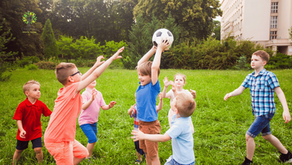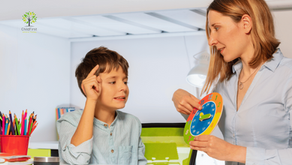
Autism spectrum disorder (ASD) affects individuals in various ways, presenting unique challenges and strengths. For children on this spectrum, engaging in activities that promote calmness, focus, and regulation of their senses is pivotal for their well-being. Yoga, emphasizing mindfulness, breathwork, and gentle movement, has emerged as a valuable tool in supporting children with ASD. This article will explore how yoga-based indoor activities for kids with autism can benefit and provide practical guidance on incorporating these practices into their routines.
Understanding Autism and Its Challenges
Autism is a neurodevelopmental disorder known for difficulties in communication, social interaction, and repetitive behaviors. Children with ASD, often guided by ABA behavior therapist, may display heightened sensitivities, reacting strongly to stimuli such as light, sound, or touch. These sensitivities can provoke feelings of overwhelm and anxiety.
The Benefits of Yoga Based Indoor Activities for Kids With Autism
Yoga offers a holistic approach to addressing the challenges faced by children with ASD. Its gentle and adaptable nature makes it an ideal activity for promoting physical strength, flexibility, and emotional regulation. Here are some key benefits of incorporating yoga into the lives of kids with autism:
Yoga promotes body awareness and movement, supporting development and offering a structured approach to handling input from the environment.
Emotional Regulation: Breathing exercises and mindfulness techniques in yoga help children regulate emotions, reduce anxiety, and increase self-awareness.
Improved Focus and Concentration: The practice of yoga poses (asanas) and sequences enhances focus and concentration, positively impacting learning and daily activities.
Enhanced Physical Well-being: Yoga promotes physical strength, balance, and coordination, supporting the development of gross and fine motor skills.
Social Interaction: Group yoga sessions offer a safe environment for social interaction and cooperation, fostering a sense of community among participants.
Yoga Activities Tailored for Kids With Autism
Customizing yoga for children with ASD involves establishing a secure, predictable, and environment conducive to their needs.
Here are some yoga-based activities explicitly tailored for kids with autism:
Breathing Exercises: Begin with simple breathing exercises like "balloon breathing," where children imagine inflating and deflating a balloon with their breath. This may help to calm their nervous system and enhance self-awareness.
Yoga Poses: Introduce basic yoga poses gradually, emphasizing simplicity and stability. Poses like "Mountain Pose" (Tadasana), "Tree Pose" (Vrksasana), and "Child's Pose" (Balasana) can be modified to suit individual needs.
Comfortable Setting for Individual Needs: Craft a welcoming space with gentle lighting, relaxing music, and cozy yoga mats or cushions. Reduce outside distractions for a calm and concentrated environment.
Partner Poses and Games: Engage children in partner poses or yoga-based games to promote social interaction. Activities like "Mirror Pose" or "Yoga Storytime," where poses are linked to a narrative, can make the practice more engaging.
Mindfulness and Relaxation: Dedicate time at the end of each session for relaxation techniques, such as guided imagery or progressive muscle relaxation. This helps children wind down and experience a sense of tranquility.
Incorporating Yoga into Daily Routine
Consistency is critical when introducing yoga to kids with autism. Integrating short, frequent sessions into their daily routine can yield positive results.
Here are some tips for successful implementation:
Establish Routine: Set a consistent schedule for yoga sessions, incorporating them into the child's daily routine to create predictability and comfort.
Use Visual Aids: Visual schedules or picture cards depicting the sequence of yoga activities can help children understand and anticipate the session.
Encourage Choice and Autonomy: Offer choices within the yoga activities, allowing children to select poses or activities they feel comfortable with, empowering their autonomy.
Patience and Flexibility: Be patient and flexible. Some children might take time to adapt, and modifications may be needed based on individual needs and preferences.
Celebrate Progress: Acknowledge and celebrate small achievements and progress. Positive reinforcement encourages continued participation and boosts confidence.
Deepening the Understanding: Benefits and Impact of Yoga for Kids With Autism
Yoga is a versatile tool, offering immense benefits beyond the physical realm. For children with autism, it could affect their emotional control, self-awareness, and development of senses.
Boosting Awareness and Development of Senses
Some children on the autism spectrum face intense sensitivities to stimuli that can be overwhelming. Yoga provides a structured environment for them to explore their bodies, sensations, and movements in a controlled manner. Through mindful breathing and gentle poses, they learn to recognize and manage these experiences, fostering self-regulation and comfort.
Promoting Emotional Regulation
The practice of yoga encourages children to connect with their emotions in a non-judgmental way. Breathing exercises, such as "Square Breathing" (inhaling for a count of four, holding for four, exhaling for four, and pausing for four), help calm the nervous system and teach children strategies to handle stress or anxiety-inducing situations.
Yoga Poses and Modifications
Certain yoga poses can be particularly beneficial for kids with autism:
Downward-Facing Dog (Adho Mukha Svanasana): This pose helps calm the mind and stretch the entire body. Modifications like using a wall for support or keeping knees slightly bent can make it more accessible.
Warrior Poses (Virabhadrasana I and II): These poses promote strength and stability. Simplifying the poses by reducing the depth or duration can accommodate different abilities.
Corpse Pose (Savasana): A relaxation pose that allows children to unwind and focus on deep breathing. Supplying tools such as weighted blankets or eye pillows can improve the experience.
Seated Poses (Sukhasana, Easy Pose, and Lotus Pose): These poses can be comfortable for children who struggle with balance or mobility issues.
Role of Caregivers and Professionals

Caregivers and professionals are crucial in introducing and facilitating yoga for kids with autism. Collaboration between parents, educators, therapists, and yoga instructors is essential for creating a supportive environment.
Training and Education: Caregivers and professionals benefit from training programs specializing in yoga for special needs. These programs offer guidance on adapting, factors affecting experience, and effective teaching methods.
Individualized Approach: Understanding each child's unique needs and preferences is pivotal. Caregivers and professionals should tailor yoga sessions, modifying poses, and activities to suit individual abilities.
Consistency and Support: Consistent practice and encouragement from caregivers and professionals help build trust and confidence in children. Support during challenging poses or moments of distress is crucial in creating a positive yoga experience.
Additional Strategies for Incorporating Yoga
Expanding beyond traditional yoga sessions, integrating yoga into other activities can further enhance its benefits:
Yoga-Based Storytelling: Create stories or narratives incorporating yoga poses into the storyline. This engages children's imagination and makes the practice more enjoyable.
Music and Movement: Combine yoga with music and rhythmic movements. This helps in fostering a sense of joy and engagement while practicing yoga.
Art and Expression: Encourage artistic expression through yoga. Drawing or painting the feelings or experiences during yoga sessions allows children to express themselves creatively.
Outdoor Yoga: Depending on the weather, outdoor yoga sessions introduce children to natural experiences, providing a different atmosphere compared to indoor sessions.
Conclusion
Incorporating yoga activities into the lives of kids with autism greatly supports their overall development. By attending to their physical, emotional, and various needs, yoga becomes a powerful practice, offering a secure environment for exploration, expression, and personal growth. Caregivers and professionals are pivotal in nurturing this process, offering support, encouragement, and individualized guidance. In summary, the benefits of yoga for autistic children are multifaceted, encompassing physical health and emotional regulation.
Its adaptable nature and the dedication of caregivers and professionals make it a powerful tool for enhancing children's well-being and quality of life on the autism spectrum. For more guidance on implementing yoga-based activities for kids with autism or seeking professional support and advice, contact ChildFirst Behavior Therapy.
FAQs
Is yoga suitable for all kids with autism?
While yoga can be beneficial for many children on the autism spectrum, individual preferences and unique sensitivities differ. Some children might find certain poses or activities challenging due to personal sensitivities. It's important to introduce yoga gradually, observe the child's comfort level, and adjust practices to meet their specific needs.
How long should a yoga session be for kids with autism?
The duration of a yoga session can vary based on the child's attention span and comfort. Start with shorter sessions, around 10 to 15 minutes, and gradually increase the duration as the child becomes more familiar and comfortable with the practice. Consistency and routine are more crucial than length.
Can yoga replace other therapies or interventions for kids with autism?
Yoga serves as a complementary activity to other therapies and interventions. It can significantly benefit children with ASD by promoting relaxation, and emotional regulation. However, continuing with other recommended treatments and interventions as healthcare professionals prescribe is essential.
How can I encourage an kids with autism to participate in yoga sessions?
Engage the child in a gentle and non-forceful manner. Offer choices within the yoga activities, create a calm and inviting environment and use visual aids or storytelling to make the sessions more appealing. Additionally, modeling and participating together can encourage their participation.
Are there specific poses to avoid for kids with autism?
While most yoga poses can be adapted to suit the needs of kids with autism, some poses involving intense inversions or extreme stretching might not be suitable for everyone. It's essential to be mindful of each child's physical abilities and comfort levels. Consulting with a healthcare professional or yoga instructor experienced in working with special needs can offer guidance on suitable poses.



